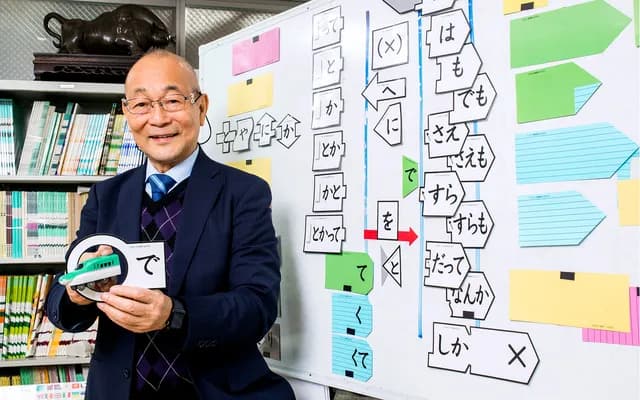The Ezoe Method
Shinjuku Japanese Language Institute differentiates itself from other language schools for its original teaching style―called the Ezoe Method. The Ezoe Method uses cards and gestures to help students easily and quickly learn Japanese grammar.

About our method of teaching Japanese
A great way for students to quickly and efficiently learn Japanese
Since SNG’s founding in 1975, this Ezoe Method had been in the making. Now, having been taught for over 50 years, this teaching method has proven effective in improving hundreds of international students’ levels of speaking, reading, and writing Japanese.
While the Ezoe Method is mainly used for teaching international students, its simplicity and success has sparked the interests of many. It has also been utilized in other types of schools, such as elementary schools and schools for deaf children around Japan.

There are various cards that the Ezoe Method uses which represent different parts of speech (noun, verb, particle, etc.)
Students are taught many ways in which they can arrange and rearrange these cards like Legos to form grammatically-correct sentences.


In addition to the cards, the Ezoe Method uses gestures for remembering verb conjugations.
Using original textbooks, students will practice listening, writing, speaking, and kanji.

Another useful aspect about the Ezoe Method is its smooth integration into technology. Shinjuku Japanese Language Institute teamed up with NTT Communications to create grammar and vocabulary apps for students to use before, during, and after class to practice Japanese wherever they are.
These apps, called VLJ (“Visual Learning Japanese”), allow students to search for any hiragana, katakana, and kanji, look up their parts of speech and examples, watch videos that are related to the character, and much more.
Students can also utilize a website that contains all the lessons from their classes in video format so that they can watch or re-watch what they’ve learned.

With the Ezoe Method instruction students learn in class, combined with the apps and website they can use outside of class, this blended learning technique has revolutionized the way our students have learned Japanese.
Related Information
To learn more information related to this page, please check out the following links:
